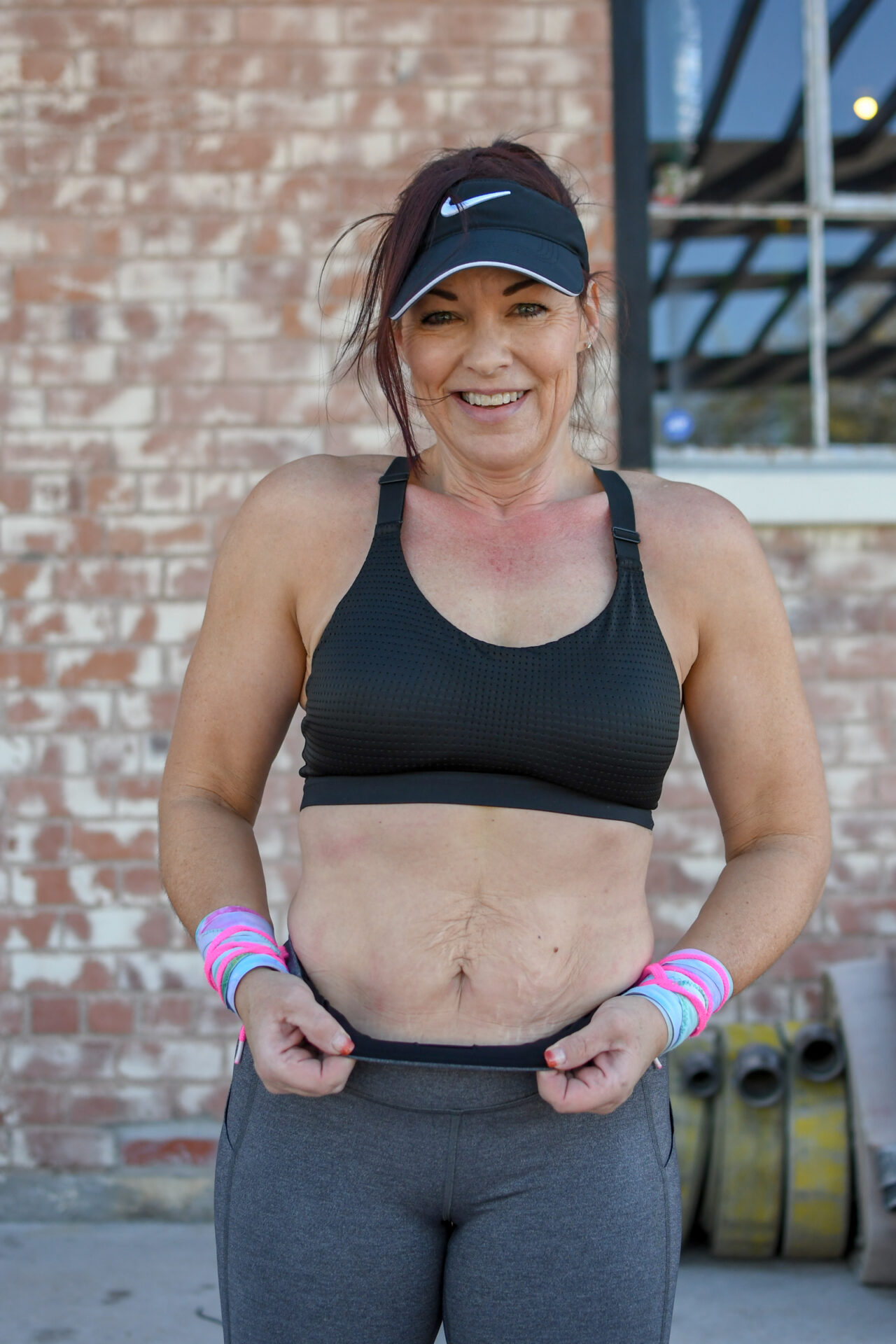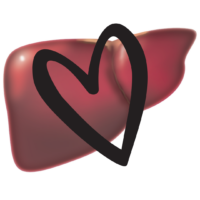Why is my waist disappearing?
Are you struggling with menopause-related stubborn belly fat? Have you ever wondered why, as you age, your hourglass waist disappears? Research shows that a female’s waist to breast or hip ratio should be about 0.7 to attract the opposite sex. But why can’t we maintain this hourglass shape for life? Why can’t we all look like Barbie dolls? First, we have unrealistic expectations, and then there are many reasons – some of which we can do something about and some of which we cannot.
Body fat facts and function
Let’s talk fat first. There are two main types of abdominal fat – subcutaneous and visceral. Subcutaneous fat is just under our skin, while visceral is the fat surrounding our core organs in our abdominal cavity. The visceral is dangerous for our health because it is linked to high blood fat levels, including cholesterol and triglycerides, and increased inflammatory diseases and dysfunction such as heart attacks, strokes, and breast cancer.
It is not good to be completely fat-free in our diet or our bodies. We require some visceral fat to protect our organs and energy storage, and we require some subcutaneous fat for protection, storage, cushioning, and shock absorption. We can measure subcutaneous fat with calipers, but visceral fat accumulation shows in our waist measurement. A high waist to hip ratio, meaning the measurement of the circumference of the hips relative to the circumference of the waist, indicates the risks.
Social media and social pressure lead us to believe we can and should maintain a whittled midsection throughout our lives. When we find that impossible, we can get the screw-it mentality. So, why should we bother eating right, exercising, sleeping, or destressing? Because your health and longevity depend on it. We may never look like a Kardashian or Sophia Vergara again or ever, but we can reduce both subcutaneous and visceral fat, maintain a favorable chest/hip to waist ratio, and reduce our risks for disease. We might look a little better too.
Why do I have belly fat?
There are many reasons for our mid-section girt. It is indicative of genetics, the stage of life we’re in, and then our lifestyle choices (i.e., diet, exercise, sleep, and stress).
Genetics
You can look at your relatives and get a good idea of whether you are “pears” with lower body weight or “apples” with a predisposition to upper body weight. Thanks a lot, genetics! There are tons of other shapes and body types, but you are typically either a bit more straight up and down with minimal curves (apple) or have a waist and hold more of your weight in your lower part – hips, butt, thighs (pear). Those who start as apples will probably always be apples and have difficulty reducing and maintaining a smaller waist. Pears can remain or slowly turn to apples as we age. Genetics do suck, but our lifestyle choices can impact that lousy hand you were dealt.
Stage of life
So, the next factor is the state of life. I call them the 5 P’s: puberty, pregnancy/postpartum, premenopause, perimenopause, and postmenopause. Our hormones have specific patterns during each of these stages. Since we are dealing mainly with peri-, menopause, and post-menopause here, but estrogen plays an important role in all stages.
Puberty
Our new surge of hormones gives us the curves that make us attractive to the opposite sex during puberty. A new estrogen rush gives us subcutaneous fat, and we grow hips, butts, and boobs seemingly overnight. We get an hourglass figure signals that to males that we are ready to make some babies! Most of us have experienced the bloat during certain times of our cycles from high estrogen pulling water into our system, causing a strain on our waistbands. For the most part, we maintain this shape even if we put on extra weight in our younger years. Poor lifestyle factors and certain disorders like PCOS, diabetes, or thyroid can make maintaining the hourglass shape complicated.
Pregnancy/Postpartum
When and if we get pregnant, we will gain some obvious middle spread, and after, we may experience hormonal dysregulations that can hinder losing central body fat. We can carry extra central weight to support breastfeeding and prevent males from seeing us as desirable and trying to procreate again too quickly. Postpartum will also leave us with a wider pelvic girdle, lax abdominal muscles, and stretched skin. It takes time and patience, and not all of this will return to pre-baby status.
The good news is that the broader hips will balance with our bigger midsections for better proportion. Genetics determines whether our skin will return or not. We have all seen those women who snap back in just a few months, but for the rest of us, it can be a struggle, and we may always be left with the belly and muffin top skin folds. Remember, the entertainers and IG influencers are going through the same things; they just have access to plastic surgeons and full-time personal trainers and chefs that we probably do not.
Premenopause
The next stage is premenopausal, whether you have had babies or not. From about age 35 on, our estrogen and daily energy expenditure begin to drop slowly – we may not have kids to chase around anymore, become more sedentary at work, etc. Either way, this can lead to a slow increase in our ‘set point weight’ – the weight our body seems to want to gravitate towards no matter how hard we diet or exercise. This weight will likely increase around a pound or two every year. If we are not utilizing proper diet and exercise, this weight will be deposited as visceral rather than subcutaneous fat, increasing our belly girth. After the age of 40, we begin to also lose muscle mass, further exacerbating these effects.
Perimenopause
Next, our estrogen starts to fluctuate relative to progesterone during our mid-forties before it begins to drop. Not only is estrogen is a strong influencer of where we deposit fat, but it also influences where we pull fat from. During perimenopause, we start to lose its protective properties. Without the protective estrogen, we don’t break down fat cells as quickly, and we tend to store more fat in our midsection. Loss of estrogen at this stage reduces storage of the gluteofemoral fat – that fat that allows us to have the hourglass shape. Our fat ‘shifts’ from our butt/thighs/chest to our stomachs.
Our insulin sensitivity and inflammation can skyrocket, exacerbating the effect. This is when I hear, “I gained 20 pounds and 4 inches on my waist in just a few months! WTH?!” On top of that, our testosterone is no longer balanced by our estrogen, leading to further central fat deposition tendencies. This shape change signals to potential mates that we are no longer primed for reproduction, so there is an evolutionary basis for it, but it still sucks!
Adding insult to injury, these body composition changes are not necessarily linked to an increase in calories but rather a decrease in movement/energy expenditure combined with the reduced protection from waning estrogen. You can’t just reduce your calorie intake without your body fighting back by dropping your energy and storing more central fat with any food you give it!
Postmenopause
Next is postmenopause; remember, menopause is just one day when you haven’t had a period for 12 months or have surgically stopped menstruation. Now our protective estrogen from our ovaries flatlines. We still have some estrogen, but it is in another form and produced elsewhere, which does not provide the stimulus for depositing fat in our butt, hips, and thighs, but instead in our mid-section. We can even lose our boobs, butt, and hips! So awesome being a woman, right?
Food and lifestyle
Food and movement
A couple of other factors can come into play beyond just hormonal shifts that happen with the 5 P’s, including food intolerances, insulin sensitivity, alcohol, and a sedentary lifestyle. Food intolerances can lead to belly bloat. If you eat a poor diet and develop insulin sensitivity on the way to diabetes, you will store more central fat.
Alcohol consumption is tightly correlated with general obesity in women. A study found that consuming an average of over 30 grams of alcohol a day directly correlates with stomach fat deposition. That makes those nightly glasses of wine that you think is reducing stress not so worth it.
As we age, we become more sedentary as well. Our kids grow up, and we aren’t spending 10k steps a day chasing our little ones around or playing with them. Now we are sitting in the stands at their games. We may get a job or a promotion that has us sitting at a desk all day doing rather than out on the floor or in the field.
Sleep and stress
Finally, the two factors make the most significant difference in women’s lives – sleep and stress. Lack of sleep can lead to weight gain and is directly tied to premenopausal abdominal fat gain. At all times of life, central obesity can be tied to sleep, and during perimenopause, sleep disturbances are common. With stress during perimenopause and beyond, we lose some of the regulatory emotional control estrogen provides, causing our stress hormones to surge. We are surrounded by stressors that we used to brush over, but now they become amplified – frustration, annoyance, rage, anger.
We get that surge of cortisol because our bodies react to our state of “fight or flight” and try to give us the energy to respond. This increases our blood sugar, but there is no tiger to run from or hyena to defend against. Since writing an angry email doesn’t expend much energy, our body doesn’t use the increased sugar, but instead stores it as fat. Remember, cortisol dysregulation is directly tied to abdominal fat gain. So for you gals who wear your stress like a badge of honor, as I did, it is time to rethink that! This response is also tied to craving more comfort foods to reduce the stressor and adding to the cycle of high blood sugar and increased fat deposition.
So, what can I do about it?
Optimize food
We need to optimize estrogen levels with lifestyle interventions to help your body store fat in the proper location and lose fat all over. Some foods are great at binding and removing excess estrogen from the body, and some supplements can help support healthy estrogen levels. I’m not throwing those out here because a helpful supplement for one woman can create an even bigger issue in another. Same with some foods.
Excess estrogen is different from an imbalanced estrogen compared to progesterone, so that may need a different approach. Some supplements are contraindicated with certain medications too. No matter your situation, you cannot go wrong with a plant-based diet. Not vegetarian or vegan, but plant-based, which includes multiple servings of a variety of leafy, cruciferous, and rainbow-colored veggies daily in addition to lean protein, complex carbohydrates, and healthy fats. This will provide nutrients, including vitamins, minerals, and fiber necessary for overall health.
Quality matters too. Processed and fast food comes with a plethora of chemicals and unhealthy fats and additives. You cannot eat like a trash panda and expect to have glowing skin, reduced cellulite, and lower abdominal fat. You must assist the body by being metabolically flexible – not eating the same thing every day – switching it up on the body and getting the proper amount of protein, fat, and carbohydrates along with fibers, minerals, and vitamins. We need to support our energy, hormones, and detoxification with soluble and insoluble fiber from whole grains, fruits, and veggies. If you know you have food intolerances and keep eating that food, you add to your waistline.
Optimize movement
You need the correct type of exercise as well. Not too much, not too little, with a mix of high intensity, strength, and plyometrics to optimize health during perimenopause and beyond. High intensity helps balance our blood sugar, builds cardiorespiratory endurance, and numerous other benefits. Moving heavy weight builds muscle, which helps with energy turnover and improves our shape and blood sugar status. Plyometrics are paramount for bone development since we no longer have that estrogen to assist with bone turnover. Studies show that increased movement and strength training during the menopause years can reduce the rate of bell fat increase and help with the estrogen swings and flatline effects. That high-intensity work can even help regulate body temperature and reduce those hot flashes and night sweats!
Stress, sleep, mindset
Let’s not forget the stress and sleep. If you are not reducing chronic stress and optimizing your circadian rhythm and sleep, you are just treading water. But if you have been following me for a while, you already know this! One last note on mindset. What is yours? Have you given up? Have you decided that you will only be happy in life if your waist is a specific size, or you are a certain weight? You have to know that your choices, your decisions, your actions can improve your situation. But you also must know that your expectations may not match up with reality. And so what if they don’t? Is it really your waist size, or do you want to be happy, strong, healthy, and vibrant and live your life to the fullest?
I’m coaching for FitMom Lifestyle now. Join my Menopause Macros group!





